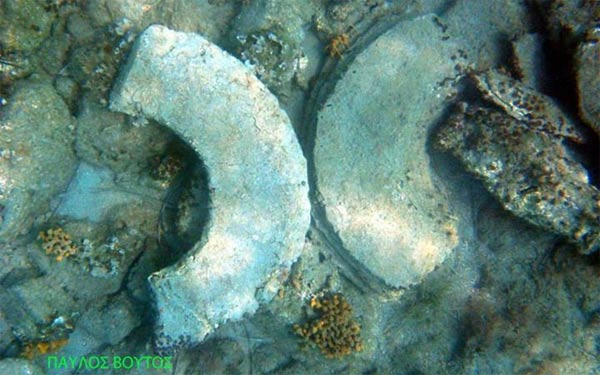In June this year, Greek archaeologists announced an amazing finding – an ancient underwater city in the gulf of Alykanas in Zakynthos, Greece. According to the Underwater Antiquities Department, the discovery included huge public buildings and other antiquities. However, in a strange twist, a new study is claiming that the ‘artefacts’ are not remnants of an ancient city at all, but simply a natural phenomenon.

The initial discovery was made during an underwater survey off the coast of Zakynthos conducted by the Underwater Antiquities Department, at a shallow depth of 2 to 6 metres. According to reports at the time, the 30-acre site contains “visible cobblestone paving, bases for pillars and other strewn about building materials”. Of particular significance were the 20 stone pillar bases, all of which feature a “34 cm diameter incision”, which were probably meant for wooden columns.

Preliminary observations led to the conclusion that the remains belonged to a large ancient public building, probably belonging to an important settlement in the ancient city’s port. It was reported that “the building’s size reflects the existence of a significant ancient settlement in the Alikanas area.”
However, a new study conducted by Dr. Michael Stamatakis, archaeologist Magdalene Athanasoula, and technical expert Petros Tsampourakis, indicated that the round ‘pillar bases’ are actually the result of a rare geological phenomenon that took place at least 5,000 years ago.

The chemical and mineralogical test showed high levels of magnesium, calcium and iron carbonates, which are usually found around vents in loose deposits of aluminosilicate. However there is no evidence of a similar geological phenomenon occurring elsewhere.
Deputy Mayor of Zakynthos Akis Ladikos mentioned that this phenomenon is unique to the world, so the scientists must conduct more test in order to provide further details.

So what are we to make of this new announcement? Are we to disregard the possibility of the findings belonging to an ancient city based on one study which may or may not have been motivated by other interests? Could the latest study indeed be correct and the initial announcement was simply a matter of ‘wishful thinking’ on the part of the Underwater Antiquities Department?
Regardless, if the findings of the new study are verified to be correct, then it does not make the discovery any less significant – the focus of intense interest will shift from archaeologists to geologists and it will then be up to scientists to discover how this unique phenomenon was created.